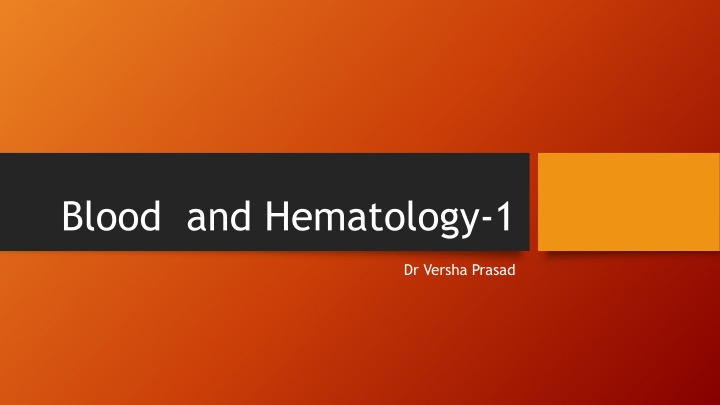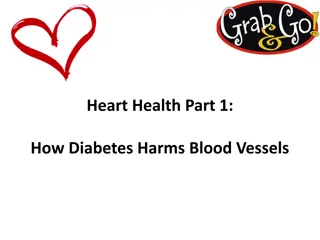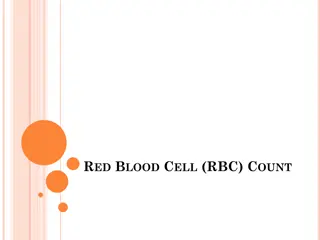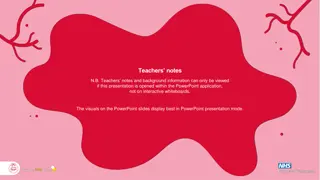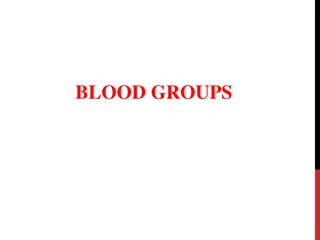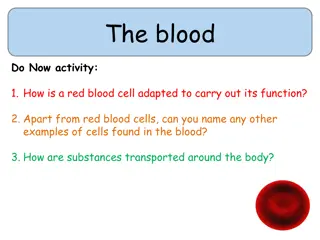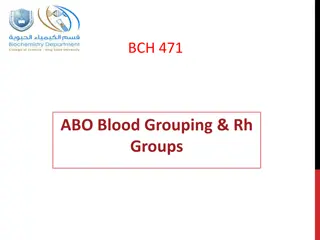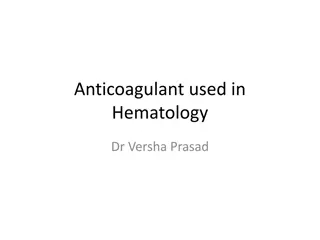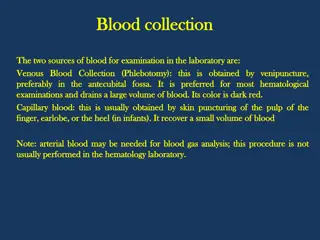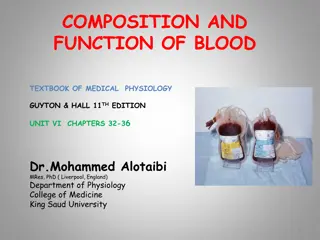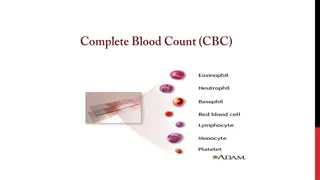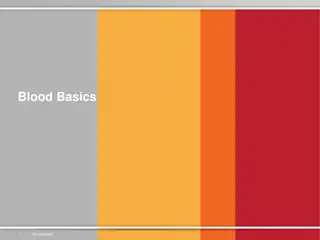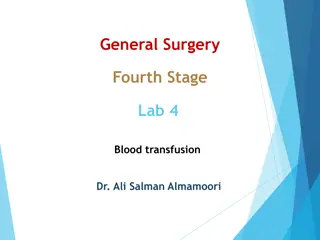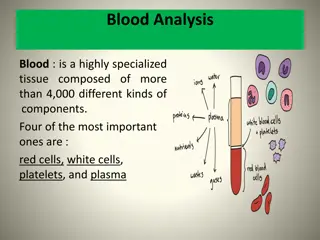Overview of Blood and Hematology: Functions and Composition
The human body consists mostly of water, with blood making up approximately 8% of body weight. Blood is composed of plasma and formed elements, including red blood cells (erythrocytes), white blood cells (leukocytes), and platelets. Plasma, the liquid part of blood, contains various proteins such as albumins and globulins. Erythrocytes play a crucial role in carrying oxygen to cells and removing carbon dioxide. The process of erythropoiesis involves the production of red blood cells mainly in the bone marrow, regulated by the hormone erythropoietin.
Download Presentation

Please find below an Image/Link to download the presentation.
The content on the website is provided AS IS for your information and personal use only. It may not be sold, licensed, or shared on other websites without obtaining consent from the author.If you encounter any issues during the download, it is possible that the publisher has removed the file from their server.
You are allowed to download the files provided on this website for personal or commercial use, subject to the condition that they are used lawfully. All files are the property of their respective owners.
The content on the website is provided AS IS for your information and personal use only. It may not be sold, licensed, or shared on other websites without obtaining consent from the author.
E N D
Presentation Transcript
Blood and Hematology-1 Dr Versha Prasad
Blood The human body is made up mostly of water; ~60 - 65% (40 L) It is a living tissue consisting of cells within a liquid matrix Average person (150lb) has ~4.8 L of blood = 8% body weight Loss of 15-30% of blood pallor and weakness Loss of >30% severe shock, death Arterial blood: bright red = oxyhemoglobin Venous blood: darker red
Blood Arterial blood: bright red = oxyhemoglobin Venous blood: darker red Composition: Plasma 55% of volume Formed elements 45% RBC s WBC s Platelets
Plasma The liquid part of blood Clear straw colored fluid Plasma consists of liquid solvent mostly water and solutes without the formed elements 93% water and 7% solutes 1000 s of different solutes Most solutes are proteins (=plasma proteins) also: salts, ions, gasses, hormones, nutrients, wastes, enzymes. Serum = Plasma with clotting factors removed
Plasma Proteins (8% of blood): 1. albumins : (with other proteins) contribute to viscosity, osmotic pressure & blood volume. Helps buffer the blood Transports many solutes by binding to them: eg. drugs, penicillin, pigments, fatty acids, bile salts 2. Globulins: Some are antibodies, part of immune system Some help transport solutes Some involved in clotting 3. Fibrinogen: Soluble precursor to fibrin = framework for clotting
Formed Elements About 45% of whole blood Erythrocytes (RBC s) most, 45%, of formed elements Leukocytes (WBC s) Thrombocytes (Platelets) All three are produced by stem cell
Erythrocytes Main function is to carry oxygen to cells also deliver some carbon dioxide to lungs. Most abundant of the three types of formed elements 99% of formed elements; Equivalent to 2.5 trillion blood cells in whole body Biconcave disc thin center, thick edges , 7.5 m diameter, 2.0 m thick Biconcave disc shape provide high surface/volume ratio so greater efficiency of gas exchange Flexible easily deforms to fit through narrow capillaries
Erythropoiesis Formation of RBC s (vs Hemopoiesis) RBC s are produced mainly in red bone marrow Kidneys produce hormone = erythropoietin that regulates erythropoiesis Average RBC lives 100-120 days As they age they become less flexible Spleen = erythrocyte graveyard Hemoglobin components are recycled after death of RBC: Biliverdin (green) & bilirubin (yellow/orange) Bile Iron stored in liver
Erythrocyte Disorders 1. Anemias Inability of blood to carry enough O2 due to not enough RBC s or not enough hemoglobin in RBC s due to low hematocrit: Normal: men 42 52% women 37 48% anemia: hematocrit is <37%
Erythrocyte Disorders Low Hemoglobin normal: males: 14-20 g/100ml women: 12-16 g/100ml Anemia:hemoglobin <12 g/dL or symptoms: pale lack energy, physical weakness,shortness of breath and difficulty in concentration Types of Anemia: Hemorrhagic (bleeding) Haemolytic (disease, parasites, drug reactions, genetic) Aplastic (cancer) Iron deficiency Pernicious (no B12)
2. Abnormal Hemoglobin Anemia like symptoms Types: Thalassemias: Thin and delicate blood cells sickle cell: group of inherited diseases that affects several million worldwide include 80,000 african americans; 1 in 12 black babies in US carries at least 1 ss gene at worst: causes severe episodes of pain, stroke, damage to internal organs and death
3. Polycythemia Too many RBC s - 8-11 million/mm3 Hematocrit = 80% Increased viscosity Causes: Overstimulation of stem cells High altitude Prolonged physical activity Fluid loss Genetic factors
